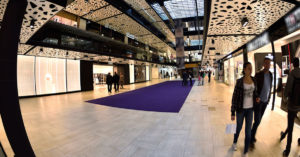There is no finer example of the praiseworthy practice of maintaining the ‘cold chain’ than the mercantile marine service, where the cold chain was first introduced and applied 120 years ago.
The correct temperature path or cold chain is arguably the single-most crucial element when bringing your perishables to a discerning market. Every link in the chain is critical — the difference between a measure of success or consummate failure. Especially in the mercantile marine service…
The proper handling of perishables, from harvesting to the dinner table, was considered prudent even in those ‘unsophisticated’ times of yesteryear.
Now fast forward to a more inventive time. It was February 1963, a Thursday, I recall. I remember this well as it was my very first week on the job; the start of an industry career spanning more years than I care to remember.
It so happened that my newly introduced and enthusiastic journeyman, with his able assistant and his new apprentice in tow, had shortly arrived at Durban’s T-Jetty, on standby for the final handover of the pre-cooling sheds located immediately below the recently constructed Ocean Terminal.
The Ocean Terminal itself was designed by the Polish architect, Janusz Warunkiewicz. It comprised a passenger concourse and customs hall, with a twelve-storey admin block at the northern end. This tower block housed the port captain’s and harbour master’s various departments. At wharfside level, immediately below, were the enormous pre-cooling cold rooms known as N-shed. These cold rooms, with their large ammonia cooling plant, were the reason for our presence early on this fine Thursday morning.
The various pre-cooling sheds were each capable of storing hundreds of tons of citrus product. Packed in wooden crates and stacked twelve metres high, the product was stored at regulated conditions prior to their transfer to the refrigerated holds of vessels alongside the wharf.
This particular morning, several Clark forklift trucks were transporting the crates of citrus, stacked four high, to the base of the large wharf crane, where in turn, they were being hoisted and lowered into the hold of a ship, RMS Windsor Castle, to be exact.
It certainly wasn’t the job at hand that commanded my attention, but rather this great ship itself. This was a ‘mail ship’ of the famous Union Castle line with its signature vermillion hull,
white super-structure, and red funnel with black trim.
At close to 38 000 tons, she was the largest passenger and cargo ship ever to grace the distinguished fleet.
Above us, in the Ocean Terminal, it was all systems go for the 12-noon embarkation and the traditional 16:00 sailing of the famous ship.
Some 700 excited passengers were in the process of arriving, attending to last-minute formalities, before embarking for the United Kingdom via Cape Town.
The Union Castle Mail Steamship Company, to give it its full title, was in no uncertain terms, a South African institution. No other company, before or since, has done more to promote
South African interests in the fields of trade, commerce, immigration, and tourism.
The Union Castle, as it was commonly referred to, came about with the amalgamation of the Union and Castle Shipping Lines in 1900. Prior to this historical merger, both companies operated separate services between the United Kingdom and South Africa. Competition between the two was understandably fierce and so I guess, amalgamation was inevitable.
Following the merger, Sir Donald Currie was appointed chairman of the new company, being formally the founder of the Castle Shipping Line.
Sir Donald was always a staunch ally and energetic supporter of all things South African, never losing faith in the country despite the Boer War, two world wars, drought, and political upheaval.
In 1891, he presented the Rugby Currie Cup, still played for today by the various provinces, a competition considered to be the Holy Grail of South African rugby. By the way, the inaugural cup tournament was won by Western Province in 1891.
Another true legend and South African icon to be created by Sir Donald, was the graceful Mount Nelson Hotel located in Orange Street, Cape Town. This truly magnificent hotel first opened in 1899, to accommodate well-to-do passengers, staff, and company guests, and remains one of South Africa’s leading hotels.
So much however for the history lesson; let’s get back to 1963 and the pre-cooling sheds.
The loading of the invaluable cargo continued unabated, completion scheduled for 15:00 with the closing and battening down of the hatches.
Several thousand tons of export-quality oranges would soon be safely on their way to markets in the United Kingdom and across continental Europe.
Along with the precious cargo, were 700 delirious passengers and 475 accomplished crew to tend to their every need.
A very envious young apprentice looked on from the quayside …
By Patrick Burke of RPM Engineering




